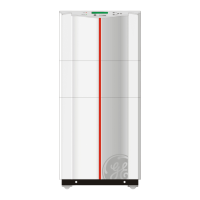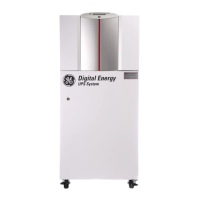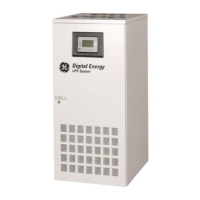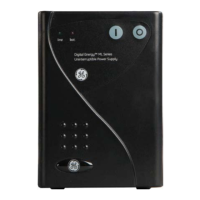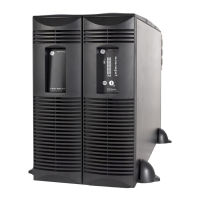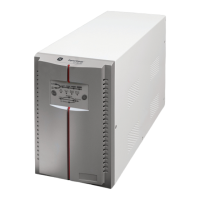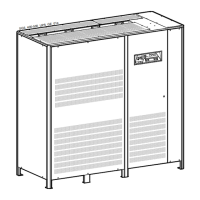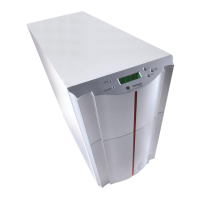
Do you have a question about the GE Digital Energy LP 11 and is the answer not in the manual?
Emphasizes the importance of reading and keeping the manual for safety and reliability.
Covers general safety precautions, including electrical shock risks and product interference warnings.
Provides guidelines for safe installation, including environmental and connection requirements.
Details proper storage conditions and procedures for the UPS unit.
Outlines safety precautions and procedures related to battery handling and disposal.
Provides an overview of the Digital Energy LP UPS, highlighting its role in providing stable AC power.
Details the warranty coverage and exclusions for the UPS product.
Explains how the UPS stores energy in batteries and uses converters for AC power.
Describes the UPS operation when utility power is stable and available.
Details how the UPS provides power from batteries during a utility power outage.
Explains the automatic transfer of load to utility power during overload or overtemperature.
Describes how to use the manual bypass for maintenance without interrupting power.
Provides instructions for safely transporting and handling the UPS unit.
Guides the user through unpacking the UPS and checking for damage.
Lists the items included in the UPS shipping box.
Refers users to safety instructions for proper UPS placement.
Outlines essential conditions and steps before connecting and switching on the UPS.
Step-by-step guide for installing the LP 3/5/6-11 UPS model.
Instructions for connecting battery extension packs to the LP 3/5/6-11 UPS.
Step-by-step guide for installing the LP 8/10-11 UPS model.
Instructions for connecting battery extension packs to the LP 8/10-11 UPS.
Information on connecting multiple LP-11 units for parallel operation and redundancy.
Key considerations for installing UPS units in a parallel system configuration.
Procedures and checks for starting up a parallel UPS system.
Guidelines for operating and maintaining UPS units in a parallel configuration.
Identifies and explains the components and controls on the front and rear panels of the UPS.
Provides step-by-step instructions for safely starting up the UPS unit.
Explains how to operate the UPS during normal use and its control interfaces.
Details how to access and interpret information screens on the UPS display.
Describes how to view UPS operating modes, status, and alarm messages.
Explains how to access and use the service menu for system information and settings.
Guides users on how to configure various UPS settings and parameters.
Explains automatic and manual battery testing procedures to ensure UPS readiness.
Describes the procedure for performing a quick battery test on the UPS.
Details the process of deep battery testing for capacity and aging assessment.
Explains different shutdown modes like remote, no-load, and emergency shutdown.
Describes the UPS's ability to start without battery connection, with zero runtime.
Covers programming sleep periods for the UPS using monitoring software.
Explains how the UPS protects itself from overload conditions by switching to bypass.
Details the ECO-mode feature for improved efficiency and energy saving.
Explains the auto-restart feature for automatic UPS startup after a fault condition.
Describes advanced battery management features like equalize and boost charging.
Explains the RS232/Contact interface for advanced communication and control.
Details the connection and function of the emergency shutdown feature.
Describes the optional relay card for monitoring UPS status via dry contacts.
Explains the optional SNMP card for network management of the UPS.
Discusses how battery extension packs increase runtime and require configuration.
Mentions optional plug-in cards for enhanced functionality.
Explains the RPA facility for creating fault-tolerant, reliable parallel UPS systems.
Provides general maintenance advice, focusing on keeping air inlets clear.
Information on the expected life and factors affecting the cooling fan.
Covers battery service life, testing, and replacement recommendations.
Crucial safety warnings regarding internal voltages and cabinet access.
Guidelines for storing the UPS to maintain battery life.
Advice on environmentally responsible recycling of the UPS and batteries.
Lists common self-test failure messages and their potential causes for diagnosis.
Details the automatic bypass switch functionality, voltage limits, and frequency tracking.
Provides specifications for battery type, voltage, capacity, service life, and recharging.
Lists specifications for different battery extension pack configurations and runtimes.
Information on the UPS enclosure, dimensions, weight, and protection ratings.
Covers mechanical, humidity, safety, EMC, and surge capability criteria.
Specifies ambient temperature range, noise levels, and approvals for the UPS.
Lists and describes controls, indicators, and alarms on the front and rear panels.
